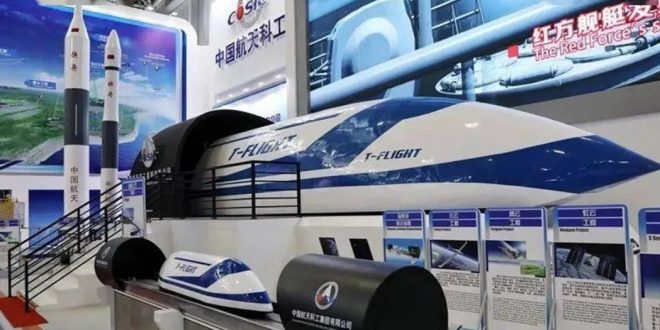China claims to have tested a hyperloop-style train, in which a train is levitated above magnetic rails inside a vacuum tube, successfully on a 2-kilometer (1.2-mile) test track in North China. State-run media outlets claim the train reached speeds of 81 mph (130 kph), but ultimately finished, the design might enable speeds of up to 620 mph (1,000 kph).
A 60-kilometer test track is now being planned; this may be the first time such a concept has been built and tested anywhere in the globe.
Maglev technology, which is now utilized throughout the world in the form of high-speed bullet trains, is employed by hyperloop trains, but they take it a step further by enclosing the tracks in a partial or complete vacuum. Passengers on hyperloop trains have even remarked that they are completely oblivious of the speeds they are going at due to the complete lack of air resistance or friction. The floating pods produce almost little noise because they lack wheels and tracks, making travel more comfortable.
By successfully completing the first-ever passenger voyage using hyperloop technology in November 2020, Virgin Hyperloop created history and showed that the technology can be both safe and comfortable for passengers. In under six seconds, the pods went from 0 to over 100 mph, yet passengers claimed they were unaffected by the quick acceleration. Unfortunately for hyperloop supporters, the corporation stated shortly after that it would stop transporting people in its hyperloop trains and laid off half of its workforce.
 Tech Gadget Central Latest Tech News and Reviews
Tech Gadget Central Latest Tech News and Reviews




